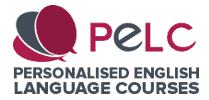Beginner to intermediate English – It’s the climb
Following on from my post on how to progress from intermediate to advanced level, let’s now turn our attention to how to move from beginner to intermediate English.
To do that, I’d like to refer to my experience teaching a lady called Natalia from Gdańsk, Poland.
Once a beginner, but now a low-level intermediate speaker, Natalia’s English skills have come on in leaps and bounds over the past year.
Natalia’s been able to move from beginner to intermediate level for a whole host of reasons.
Dive in to check out how she’s gone from strength to strength.
RECALLING MY FIRST TIME TEACHING ENGLISH TO A BEGINNER
One has to have a basic grasp of a beginner’s mother tongue to be able to transfer knowledge and the meaning of basic constructions to them.
For that reason, I didn’t teach total beginners in the first two years of my career (2006-08) because my command of Polish was very limited.
In 2010, I found myself in the central Polish city of Płock. It was here that I taught my first beginner level student on a private one-to-one basis.
All I can say is that I wasn’t methodologically astute enough at that time to be able to help the learner shift from beginner to intermediate level in super quick time.
Unfortunately, our classes revolved around me drilling the usual present simple structures, or giving him prompts (in English or in Polish) to form simple sentences/questions:
1.
ME: "I play football - She ... "
STUDENT: "She plays football"
2.
ME: What do you do?
STUDENT: I'm a fireman
3.
ME: Co on robi?
STUDENT: What does he do?
Our classes were extremely fast-paced. Frankly, he didn’t have a moment to analyse the methodology involved.
If one decent thing did come out of the classes, then this student’s motivation levels never seemed to wane for one moment.
Whether or not he continued to study English or not after I left Płock, I don’t know.
WHY IS STEPHEN KRASHEN’S COMPREHENSIBLE INPUT HYPOTHESIS SO RELEVANT WHEN IT COMES IT BEGINNERS?
In 2020, I did something with a beginner student called Natalia which brought fabulous results.
Essentially, I was torn between teaching Natalia the typical language beginners’ learn, such as his name is ... , and exposing her to language which I knew was quite a bit above her current level of understanding.
Yep, we’re moving into Stephen Krashen comprehensible input territory here.
I opted to immerse Natalia into the Innovations Elementary coursebook.
It is my belief that Innovations Elementary is challenging, and might easily pass as a pre-intermediate level coursebook. Anyway, more on that in the next section.
Back to Krashen’s comprehensible input hypothesis. The input hypothesis is one of Krashen’s five main hypotheses regarding second language acquisition. This hypothesis asserts that a language learner improves and systematically progresses when the ‘input’ in the target language is one step above his/her current level of linguistic competence.
Now, coming back to Natalia.
All signs pointed to Natalia being a beginner. She could barely understand the simplest of questions and express the most basic information about herself. Nevertheless, I had a feeling that some pieces of the English language were stored away somewhere in her brain. I just had to extract them. Additionally, I think that Nat had, and still has, a steely determination about her to master the language.
Therefore, I decided to bypass the usual patronising greetings which beginners typically learn.
Within the space of a year, Nat has got to grips with most of the language and texts in both Innovations Elementary and, indeed, Innovations Pre-Intermediate.
Mission accomplished.
BASIC COMMUNICATION WITH THE AID OF A COMMUNICATION-FOCUSED COURSEBOOK
Let’s dive into Innovations Elementary to find out how teachers can exploit it to help beginners get the most out of it.
Firs of all, I don't fall into the trap of teaching those so-called "Useful expressions" which beginner learners will eventually acquire at some stage through repeated exposure:
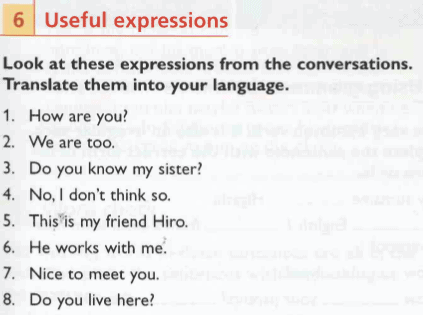
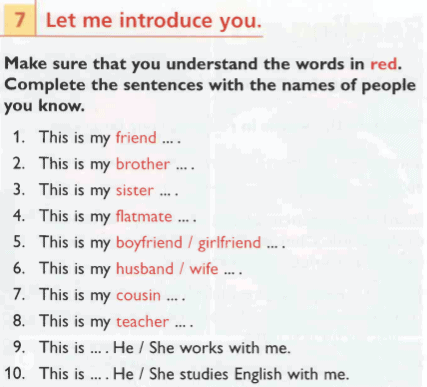
Let’s move on to bigger and better things, such as this text:

I let Natalia do some reading. After all, her pronunciation needed work. It was also beneficial for her to listen to me reading short sections to pick up some pronunciation and intonation patterns.
Most importantly, I wanted to get away from the drilling-type exercises I forced upon my student in Płock.
The focus had to be on communication.
Look at number 1 in the text above. Natalia had a cracking model here to say something about herself, her family members and her friends:
My name’s Natalia and I’m from Poland. I live in Gdańsk, which is around 350km away from the capital, Warsaw. I live with my husband and two kids. We live in a big house three kilometres from the city centre
My job was to help Nat modify the model text and facilitate her speech - using Polish phrases and words when necessary. For example, Nat didn’t know around and away from in “which is around 350km away from …” Therefore, I had to throw some Polish into the mix to keep things moving for her.
To make that jump from beginner to intermediate, teachers need to provide students with convincing texts and descriptions written in the first person.
The next step is for teachers to give students the freedom to partially modify these texts to describe their own circumstances.
BEGINNER TO INTERMEDIATE WITH THE AID OF VERY EXPLOITABLE SHORT TEXTS
Nat and I were able to fully exploit Number 2 in the text below:

Number 2 partly describes Nat’s hometown of Gdańsk.
For instance, Gdańsk is “in the north”, “by the sea” and “There’s a lot to do there - museums, shops, restaurants”.
My contention is that if these very short texts and descriptions are BROADLY TRUE FOR a STUDENT, then words, phrases and even sentences are far more likely to 'stick' in their mind.
AS much “COMPELLING INPUT” AS POSSIBLE TO ENABLE THE TRANSITION FROM BEGINNER TO INTERMEDIATE
So, according to Krashen’s Comprehensible Input hypothesis, input must be broadly understandable for acquisition to ensue.
But what kind of input should teachers strive to offer learners to allow for “optimal language acquisition”?
Well, Krashen argues that “interesting” input might not cut the mustard. Instead, input should be “compelling”. Hence, Krashen's Compelling Input Hypothesis.
Now, it’s difficult to find "compelling” texts for beginners. After all, they’re hardly able to read books and literary masterpieces in a foreign language without referring to a dictionary every ten seconds.
Nevertheless, I’m convinced that most of the short texts in Innovations Elementary are compelling enough for beginners:
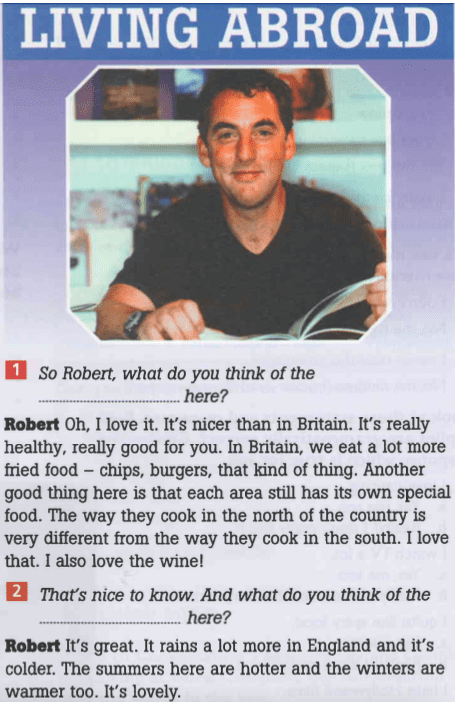
What’s “compelling” for one person might not be “compelling” for another.
All I can say is that texts such as the one above are easy to relate to and don’t have that strong whiff of artificiality that many texts in coursebooks have. Thus, texts like this one do a great job in getting beginners to open up and speak.
TOP TIPS FOR BEGINNER LEARNERS OF ENGLISH
Here are some great tips to help beginners progress from beginner to intermediate level:
1. Read, read and read simple English texts:
The texts in Innovations Elementary do the trick
2. Make other people’s descriptions your own:
If you read a description which has whole sentences or parts of sentences which are also true for you, copy them out into your notebook or in a google doc. Change only those words which you have to. As previously mentioned, parts of the description below were very relevant to Natalia's background and place of living:

3. Store new words and collocations in a Word-Phrase Table:
I regularly write about the PELC Word-Phrase Table on this blog.
This is because it is so effective when it comes to building fluency and making the leap from beginner to intermediate.
Essentially, when you come across a new word or phrase, it’s vital to PERSONALISE it. In other words, create one or two true, personalised sentences which contain the new word or phrase. By a personalised sentence I mean a sentence which reveals your life experiences, current situation in life, future plans and ambitions and even opinions on contentious matters.
For instance, let’s return to Natalia and the word 'north' - in Polish, północ. This is how she could exploit the word 'north':

Collocations can be recorded after a dash (-).
Personalised sentences may be recorded after a star (*).
The assumption is that learners will be able to retrieve these collocations and personalised sentences in future conversations.
4. Engagement in short listening activities:
I’m not a huge fan of coursebooks. However, there’s no better place to find short listening activities to develop listening skills.
At a lower level, it’s vital that learners work on their receptive skills, i.e. listening and reading. In my view, spoken fluency results from dedicating conscientious effort to honing these receptive skills.
BEGINNER TO INTERMEDIATE - DON’T TAKE YOUR FOOT OFF THE GAS
As this image depicts, if beginners employ the right strategies and immerse themselves in English in the first year of their learning, RAPID progress will follow:
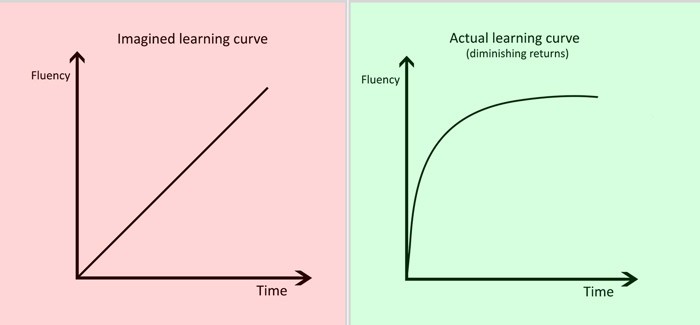
However, moving from beginner to intermediate level is only half the battle.
The real test comes at the upper-intermediate level when this once swift progress may grind to a halt.
The good news is - beginners can become quite communicative in English in a relatively short space of time.
Natalia falls into this 'quite communicative' category because she’s conscientious and determined.
